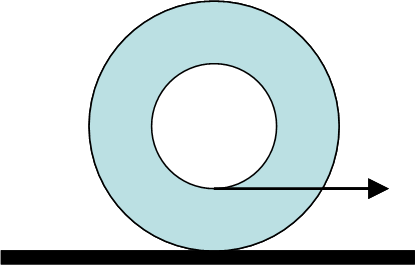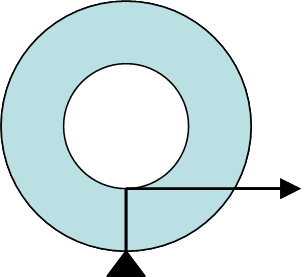The Spool and String and Torque
Posted on: March 18, 2009
This is one of my favorite simple demonstrations. I have a plastic spool that came from a pack of rope lights. The spool is about a foot across and I use it regularly to demonstrate a constant horizontal velocity.
When we study torque, I attach a pink mason line to the spool and wind it up. The question for the kids is, “What happens when I pull on the string?” Now, if it is unwinding from the top, obviously the spool is going to go in that direction. In the case of the drawing on the right, the spool is going to roll to the right.
But what happens when the spool unwinds from the bottom? Most of the kids think it is going to move to the left. A few will guess that it will stay in place, unwinding and slipping at the same time. Only a few think it will move to the right.
It does in fact move to the right. If we consider the point at which the spool meets the table our fulcrum, then we have a torque causing clockwise rotation according to the drawing at the right. The force is going to wind the string around the spool. Don’t believe me, try it for yourself.
4 Responses to "The Spool and String and Torque"
i want to know more about this spooling effect please help me…………….




November 4, 2009 at 7:57 pm
I know that if you pull it to the right it will move right that fact is already established. But, what about the direction of the spin when you apply the force from the bottom? Why is it in the opposite direction to the torque applied by the string? Well, it must be due to some other force, which is friction. Then it must be that the torque from the force of friction is greater than the torque from the force applied. But, the whole point of why I ask a series of questions that I think I know the answers to is to ask one question… Why friction is in that direction? It boggles my mind.
Additionally, if you raise the string at an angle from the bottom, there is a point where the spool turns in the opposite direction of the force applied, which raises even more questions.